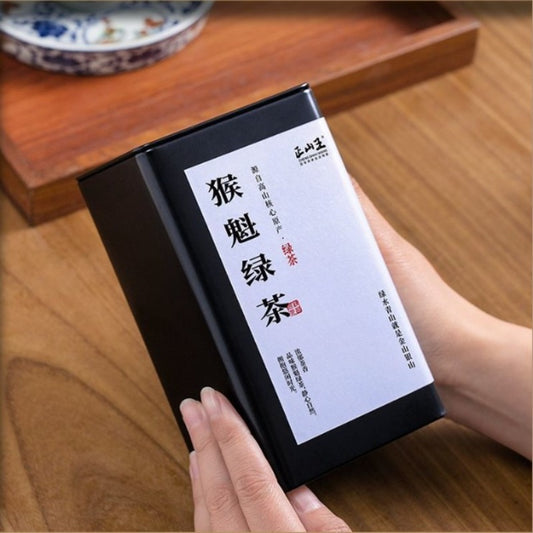Taiping Houkui Tea Guide: The "King of Green Tea"
I. Legendary Origins: A Treasure from the Peaks of Huangshan
Taiping Houkui, one of China’s top ten famous teas, is grown in the Houkeng (Monkey Pit) area at the northern foothills of Huangshan Mountain. Known for its striking "sword-like" appearance—often described as "knives and spears standing upright"—its name derives from local legends of mystical monkeys picking tea leaves. It gained fame in the late Qing Dynasty thanks to tea master Wang Kuicheng’s refined processing techniques, earning its title as the "King of Green Teas."
II. Key Characteristics: A Tea of Unmatched Elegance
-
Striking Appearance
· Two leaves clasping a single bud, slender and straight (5-7 cm long, called "grand and imposing" in tea terms).
· Veins show a faint reddish hue ("red silk threads") against emerald-green leaves, with a subtle downy texture.
-
Orchid-like Fragrance
· A refined, lasting aroma with cooling orchid notes and a hint of honey sweetness—referred to as "Houkui’s charm" (猴韵 Hou Yun).
-
Complex Flavor Profile
· Smooth, fresh, and mellow with a lingering sweetness and a refreshing aftertaste. Can be steeped 3-4 times.
III. Tasting Guide: Unlocking the "Hou Yun"
1. Observe the Leaves
· High-quality Houkui has thick, straight leaves with minimal breakage. Look for the "red silk threads" on the back (a natural fermentation mark, not a flaw).
2. Inhale the Aroma
· Dry leaves: Roasted bean fragrance with orchid undertones.
· Wet leaves (after brewing): Intensified orchid scent with a fruity sweetness.
3. Admire the Liquor
· The tea soup should be clear and bright, with a pale yellow-green hue (no cloudiness).
4. Savor the Taste
· First infusion (85°C, 30 sec): Fresh and delicate, with a light sweetness.
· Second infusion (90°C, 20 sec): Orchid fragrance peaks, with a cooling throat sensation.
· Third infusion onward: Sweet and enduring, with fully unfurled jade-green leaves.
IV. Buying Tips: Avoiding Fake Houkui
· Check the Origin: Authentic Houkui comes from Houkeng, Hougang, or Yanjia (look for "Protected Geographical Indication" on packaging).
· Avoid "Weak & Cloudy": Low-grade versions have broken leaves, murky liquor, and weak aroma.
· Handmade vs. Machine-made: Hand-processed leaves are more natural-looking, while machine-made ones appear uniform but lack elegance.
V. Brewing Recommendations: Gentle Mastery
· Water Temp: 85-90°C (let boiled water cool 1-2 mins to avoid scorching tender leaves).
· Vessel: Glass cup or gaiwan to appreciate the "tea dance."
· Pouring Technique: Gently pour along the cup’s edge to preserve the leaves’ integrity.
VI. Cultural Insight: A Tea of Refinement
Traditional Houkui tasting follows the "Three Observations, Three Smells, Three Tastes" method:
· Observe dry leaves, liquor color, and spent leaves.
· Smell dry aroma, lid scent, and cooled cup fragrance.
· Taste freshness, richness, and lingering charm.
Final Note: Taiping Houkui is a "scholar’s tea"—wildly bold in form yet elegantly subtle in flavor. Drinking it is like reciting a landscape poem, where every sip unfolds layers of mountain mist and orchid breezes.

![Early Spring Huangshan Premium Taiping [Hou Kui] Green Tea 260/520g - YIQIN TEA HOUSE | yiqinteahouse.com | green tea, hou kui, tea](http://yiqinteahouse.com/cdn/shop/files/3a7c7b859e24c2676b1cc155c2e9e815.jpg?v=1735795571&width=533)

